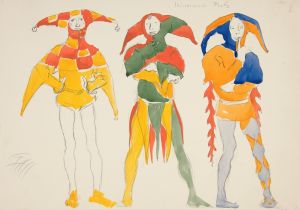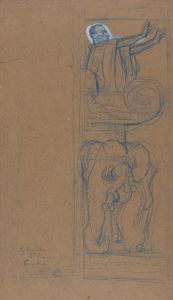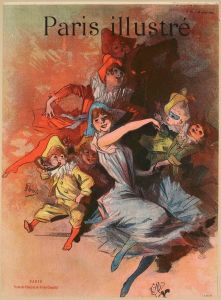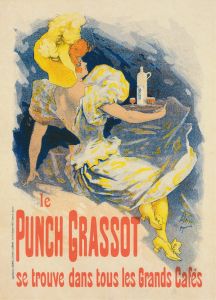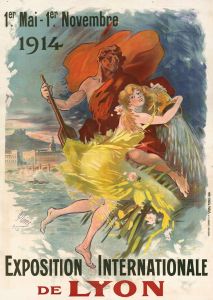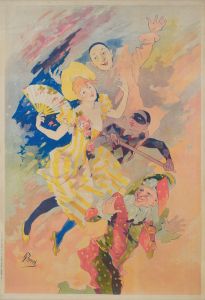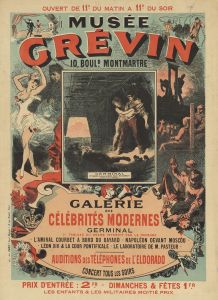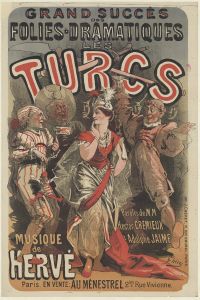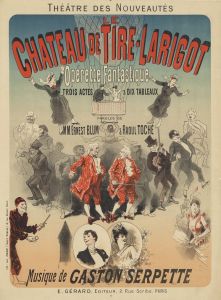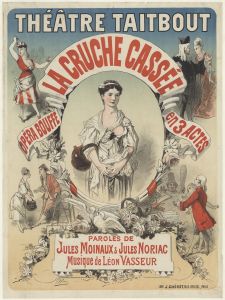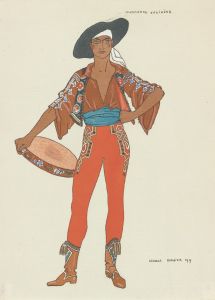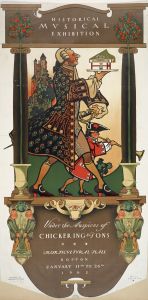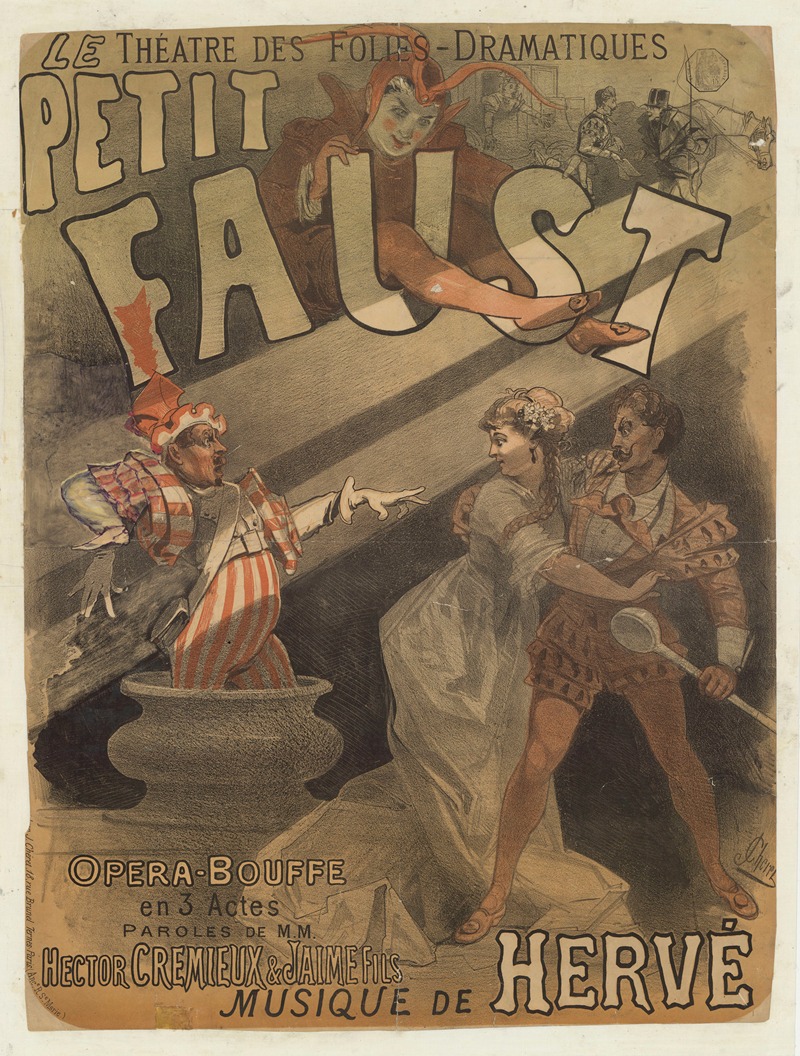
Théâtre des Folies-Dramatiques, Le Petit Faust…Musique de Hervé
A hand-painted replica of Jules Chéret’s masterpiece Théâtre des Folies-Dramatiques, Le Petit Faust…Musique de Hervé, meticulously crafted by professional artists to capture the true essence of the original. Each piece is created with museum-quality canvas and rare mineral pigments, carefully painted by experienced artists with delicate brushstrokes and rich, layered colors to perfectly recreate the texture of the original artwork. Unlike machine-printed reproductions, this hand-painted version brings the painting to life, infused with the artist’s emotions and skill in every stroke. Whether for personal collection or home decoration, it instantly elevates the artistic atmosphere of any space.
The artwork Théâtre des Folies-Dramatiques, Le Petit Faust…Musique de Hervé is a poster created by the renowned French artist Jules Chéret. Chéret, often referred to as the "father of the modern poster," was a pivotal figure in the development of commercial art during the late 19th century. His innovative designs and vibrant use of color revolutionized advertising and established the poster as a legitimate art form.
This particular poster was designed to promote a theatrical production of Le Petit Faust at the Théâtre des Folies-Dramatiques in Paris. Le Petit Faust is an operetta composed by Hervé, a French composer and performer whose real name was Florimond Ronger. Hervé is often credited as one of the pioneers of operetta, a genre that combines elements of opera and musical theater. Le Petit Faust, first performed in 1869, is a satirical adaptation of Goethe's Faust, blending humor, music, and social commentary.
The Théâtre des Folies-Dramatiques, where the production was staged, was a prominent Parisian theater during the 19th century. Known for its light-hearted and entertaining performances, the theater specialized in operettas, vaudevilles, and other popular forms of entertainment. It attracted a wide audience, contributing to the cultural vibrancy of Paris during this period.
Jules Chéret's poster for Le Petit Faust exemplifies his signature style, which combined dynamic compositions, bold typography, and lively depictions of characters. His work often featured graceful, animated figures, particularly women, who became central to his artistic identity. Chéret's posters were not only functional as advertisements but also celebrated for their artistic merit, influencing both the art world and the burgeoning field of graphic design.
This poster is a testament to the collaboration between the arts of theater, music, and visual design in 19th-century France. It reflects the cultural milieu of the time, when Paris was a hub of artistic innovation and entertainment. Today, Chéret's posters, including this one, are highly regarded as iconic examples of Belle Époque art and are preserved in museums and private collections around the world.






